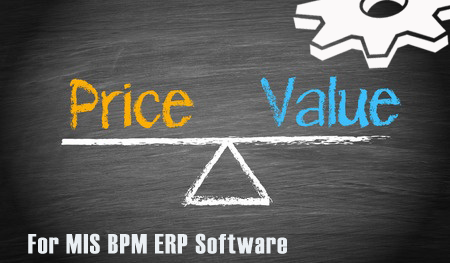 Some time ago, you purchased an expensive Management Information System (MIS) program to manage your company’s information. Now, somehow, most of its components are gathering dust. How’s that working for you?
Some time ago, you purchased an expensive Management Information System (MIS) program to manage your company’s information. Now, somehow, most of its components are gathering dust. How’s that working for you?
One of the most interesting parts of my job is getting to speak and work with business owners and managers all over the country. My particular interest is about the systems they use to run their companies.
I’m no longer surprised, however, when I hear that the “$60,000” MIS program they bought months, even years ago, has been only partially implemented. That’s the cause of much of their ongoing operational problems.
I guess you could call me a nerd, but it makes my day to help other companies become smooth operations with peaceful environments. Great, to see owners and employees come out of chaos and begin to thrive using the power of systems!
Getting the Most Out of Your MIS Program
As you probably know, many of these Management Information Systems (e.g., EFI Printsmith and Logic, Hagen, EPMS, etc.) can be very pricey. It’s important then, that a company is able to get the best bang for the buck. However, I’ve discovered that, for instance, MIS scheduling modules are rarely implemented. After trying them awhile, most companies revert back to their old ways of doing things. Some use Excel spread sheets, schedule boards or other homegrown scheduling methods. Why is that?
Scheduling can be a very complicated system, due to its many variables. Sadly, many companies just give up, and blame it on the software.
On the other hand, companies that know the power of good systems will persevere and overcome the push-back they receive from certain employees who seem unwilling to embrace any challenges. With good systems in place, workers are necessarily accountable for their job performance and output. Without systems it’s easy for a less diligent worker to hide in the chaos and place blame on others when mistakes happen.
Implementing an MIS System Takes Leadership
Adding estimating, finish goods, floor data collections, scheduling, etc., takes leadership, patience, time and, most importantly, COMMITMENT!
So, why DO companies buy expensive Management Information Systems (MIS) and not use them to their full power?
Maybe a highly-skilled “Rah Rah” consultant gave the company owner a great demo. OR… the owner heard of a certain MIS working “beautifully” in other companies. But, after the “Rah Rah” session, then what?
Some buy these programs seeking a quick fix. I’m here to tell you, there is no such animal!
Implementing a good Management Information System will likely take a company about a year. So, I suggest you train on and implement one module at a time. As the leader, you are the one who needs to make the commitment for full implementation, whatever it takes! Yes, there will be opposition and frustrations, but don’t turn back; the journey is worth it. In today’s economic times, we can’t afford the cost of chaos!
Other Business Management Solutions
Our company markets a business process management (BPM) solution for quality and service control, and document control. This system actually measures the cost of chaos. The online systems we have developed are married to our MIS system. We have years of experience with issues that challenge owners and managers, when it comes to implementing systems that work.
We KNOW your pain, and we KNOW there is a sustainable fix for your company’s worst challenges!
I suggest you reopen the operations manual for the MIS program you’ve already bought and paid for. Learn again how it can benefit your company. Don’t expect the company that sold you the system to hold your hand for the entire implementation journey. Yes, they should train, fix any bugs and keep it updated, but you as an owner and manager must make it happen.
I highly recommend the use of the marriage of your MIS with the following tools, to bring total order to your business:
Daily Routine Checklists for Personnel
The Daily Routine Checklist is like the job description, developed into a detailed checklist of duties in the order a person performs them, from the time they arrive at work until they leave. It is to be prominently located for easy use, either on an employee’s desk or a clipboard by their workstation. With this document you, the owner or manager, also have for your reference a list of everything each employee does each day. Daily Routine Checklists are your eyes to see every task and duty performed in your organization, from taking mail to the post office to mopping the floors. These checklists followed correctly, one step at a time, stop errors from being repeated and virtually eliminate procrastination and chaos.
Quality and Service Control Checklists
Quality and Service Control Checklists are crucial to any company that wants to guarantee quality and service. Every company and organization has a product it is selling or promoting. Your product may be a service, but it should be quality service. A verbal commitment to quality and service is about as predictable as bubbles in the air. Without a checklist system you cannot guarantee or prove quality or service, because you are a fallible human being, and you can’t remember to complete every process consistently.
No MIS is perfect! However, I’m convinced that, working in concert with other tools, such as Daily Routine Checklists and other Control Checklists, you can fix those system-busting events that cause chaos in your company, permanently!
Did I mention? Great System Work!

Recent Comments